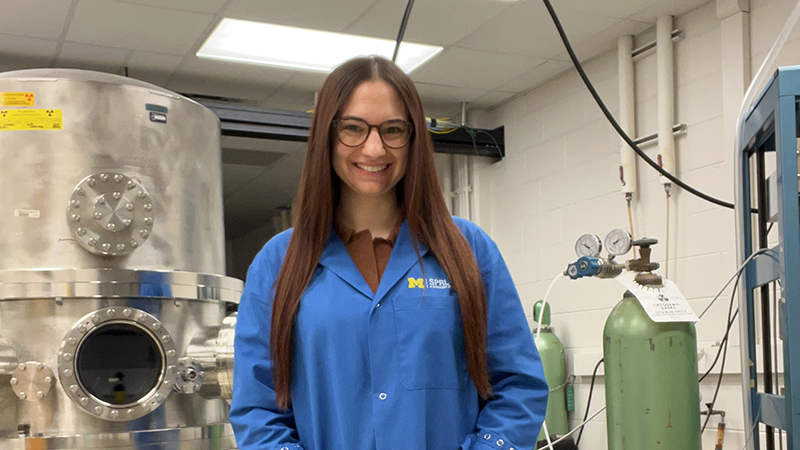Samantha Vaughn works as Senior Engineer in Research at the Space Physics Research Laboratory (SPRL) and XTRM Labs. Hailing from Dearborn, Michigan, she received her Master of Science in Electrical Engineering from the University of Michigan — Dearborn. She designs space hardware and manages the laboratory for the Solar and Heliospheric Research Group at the U-M Department of Climate and Space Sciences and Engineering.
Q. What is your research area or engineering focus?
A. My engineering focus is primarily hardware design for space instruments, with an emphasis on digital electronics related to command, control and data handling for the overall system. As part of this work, I also help to produce the firmware for FPGAs (Field Programmable Gate Arrays), which are typically one of the most important integrated circuits on the boards we design, since they are flexible for different use cases and are able to handle a wide array of interface requirements.
At the Solar and Heliospheric Research Group, I help to repair, maintain, and operate vacuum chambers and related equipment that simulate the space environment for testing of space bound instruments.
Q. How did you decide to pursue this line of work, type of engineering, or area of research?
A. When I was growing up, I was never pulled strongly towards a specific career related to any of the hobbies or interests I had at that time. During high school, I was very involved in music, but I did not see myself having a career in that area. Even during the duration of my time as an undergraduate student here at the University of Michigan in Ann Arbor, I still was not entirely sure what type of career I wanted.
However, while I was still an undergraduate student, I started working in the Climate and Space Research Building as a student assistant in one of the department offices. While I was working in the building, I met one of the SPRL engineers (Ryan Miller), who familiarized me with SPRL and the work that they do. I was then offered the opportunity to work as a student engineering assistant in SPRL. That was a defining time period for me, where I first gained interest in pursuing engineering as a career.
Q. What is one of the greatest benefits or opportunities that have come from working in your field?
A. SPRL engineering is unique in that we are able to learn so much more about the typical design process from the ground up compared to what I have experienced at larger companies. As SPRL engineers, we are helping to define the requirements for our instruments, designing the circuitry, helping to build up the instrument, testing the instrument, and working with our partners to help achieve the goals we are aiming for with each project. The rare opportunity to be able to understand and be involved in the entire design process is a huge benefit of working at SPRL.
Q. When you think about your experience so far at the University of Michigan and SPRL, what gives you the most pride?
A. The most rewarding aspect of working for University of Michigan and SPRL is that the work we are doing really does make a difference. The instruments that we create are meant to further scientific discovery in order to help understand more about our planet and the universe.
Q. What is the most important lesson you have learned along the way?
A. Never doubt yourself. How you perceive yourself is so important for achieving (or not achieving) what you want to do with your life and your career. This will often be difficult, but always work on trusting in your abilities!
Q. As you look to the future, what goals or career plans do you have in mind?
A. I am still early on in my career, but through my work at SPRL and the projects we will work on in the future, my goal is to learn as much as I possibly can about all aspects of what we do here. My goal is to keep learning, and to be a trusted source of knowledge for digital design.
